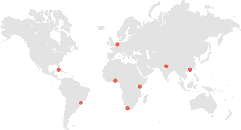Chinese University of Hong Kong
Making New Towns in a New Town
Bridging the Paradoxes of Hyper-Density and Livability, Mega-Structure and Granularity, Retro-Futurism and Preservation
The primary case study presented here is Luohu and its recent urban redevelopment projects. The current proposal under consideration by the city increases the FAR of the new development areas from 4.5 to 9. Such rapid and brutal mega-scale development is considered to be the only solution to compensate the extremely high financial loss from compensating the existing residents. The main research focus was to identify the key features of the urban villages, industrial areas and commercial developments that should be maintained, cultivated, and built upon during the transformation process. Moreover, the research also analyzed different market forces and the will of the government to virtually guarantee full-scale modernization of each village site within the decade.
The four intervention sites were CEPA Plaza (business district), Sungang (industrial area), Hubei Village (urban village) and Dongmen (commercial district).
Students:
– CHAN Kin Wang Kenneth 陳建宏
– CHEUNG Yuen Ching Angus 張淵清
– LAU Yeuk Ming Sue 劉若鳴
– LEE Siu Ki Jason 李肇淇
– LEE Wai Shing Simon 李偉誠
– LI Shanchao Cris 李善超
– MAK Chiu Fung Gary 麥潮鋒
– MAK Ka Ming Eric 麥嘉銘
– SO Kwong Tat Peter 蘇廣達
– AU Yong Wen Li Clifford
Tutors:
– Tat Lam: Adjunct Assistant Professor School of Architecture, Chinese University of Hong Kong
– Travis Bunt: Adjunct Assistant Professor, School of Architecture, Chinese University of Hong Kong

